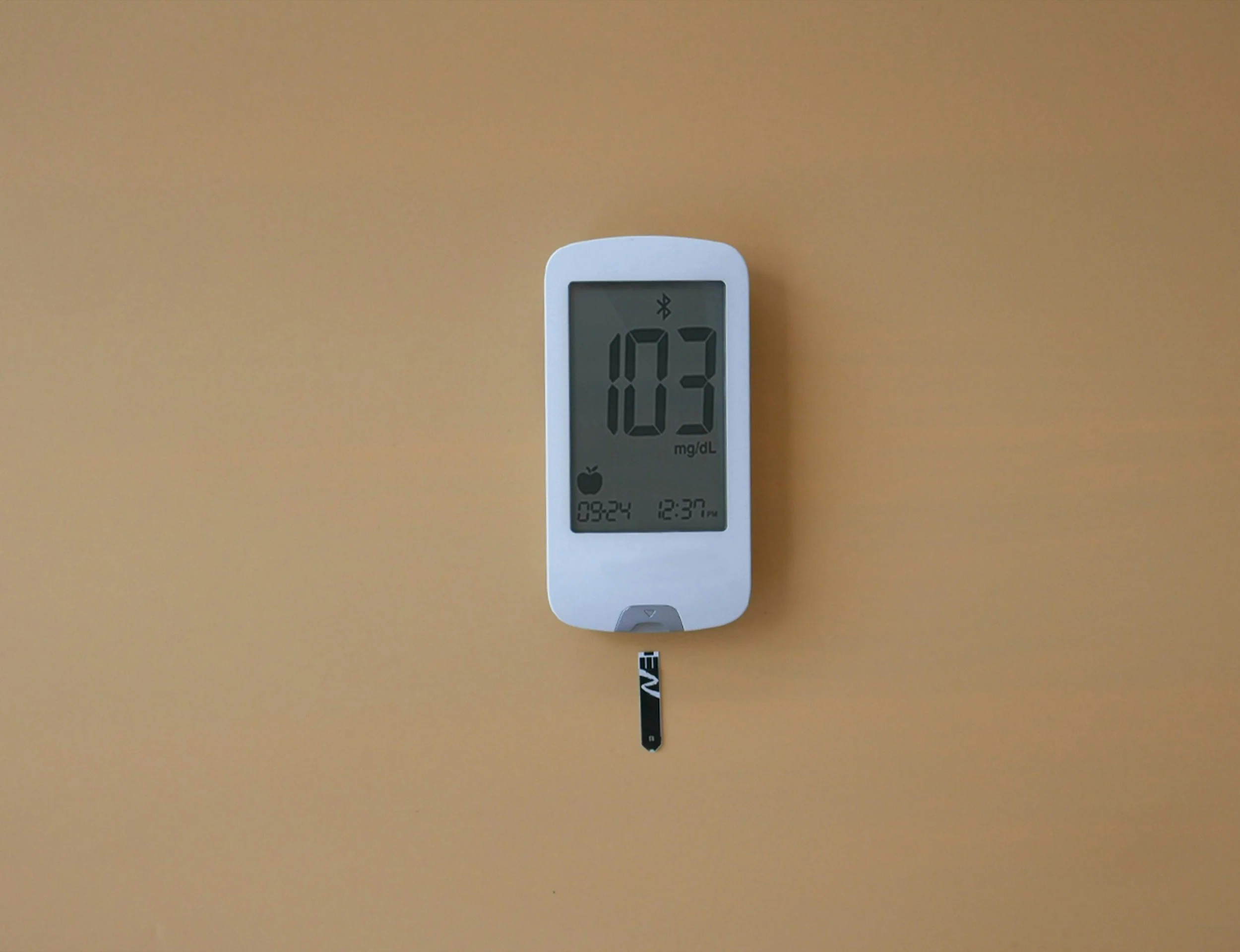Important to Know: Diabetes in Pets
Authored by Hollie Furey
Diabetes is a common metabolic disorder affecting both cats and dogs. As in humans, diabetes in pets is caused by the body’s inability to properly regulate blood sugar levels, due to problems with insulin production or action.
In this article we explore the causes, symptoms, diagnosis, complications and treatment of diabetes in cats and dogs.
Quick Read:
Types of Diabetes: Diabetes in pets is primarily Type 1 (common in dogs) and Type 2 (common in overweight cats), caused by inadequate insulin production or action.
Causes and Risk Factors: Major factors include obesity, genetics, age (older pets), pancreatitis, and hormonal disorders.
Symptoms: Key signs include increased thirst and urination, weight loss with increased appetite, lethargy, and infections. Severe cases can lead to diabetic ketoacidosis.
Diagnosis and Treatment: Diagnosis involves blood and urine tests. Treatment includes insulin injections, dietary management, and regular vet check-ups for monitoring.
Hypoglycemia Risks: Diabetic pets can face hypoglycemia from insulin overdose or missed meals, showing symptoms like lethargy and shaking. Immediate sugar administration and vet contact are crucial.
What is Diabetes in Pets?
Diabetes mellitus occurs when an animal’s body is unable to either produce enough insulin or properly use the insulin it produces. Insulin is a hormone responsible for regulating glucose (sugar) levels in the bloodstream. When insulin isn’t working correctly, glucose accumulates in the blood, leading to high blood sugar levels (hyperglycemia), which can cause various health issues.
Diabetes is classified into two types:
- Type 1 Diabetes: occurs when the pancreas produces little to no insulin. This is the most common form of diabetes in dogs.
- Type 2 Diabetes: occurs when the body becomes resistant to insulin or when insulin production is insufficient. This is more commonly seen in cats, especially those that are overweight.
Causes of Diabetes in Cats and Dogs
Several factors contribute to the development of diabetes in pets:
- Obesity: overweight cats and dogs are at a higher risk of developing diabetes, particularly Type 2 diabetes.
- Genetics: some breeds are more prone to diabetes. In dogs, breeds such as Poodles, Samoyeds, and Dachshunds are more susceptible, while Burmese cats have a higher incidence of diabetes than other feline breeds.
- Pancreatitis: inflammation of the pancreas can lead to Type 1 diabetes in both cats and dogs.
- Age: older pets are more likely to develop diabetes, typically between the ages of 7 and 10.
- Hormonal Disorders: conditions like Cushing's disease in dogs and hyperthyroidism in cats can increase the risk of diabetes.
Symptoms of Diabetes in Pets:
The symptoms of diabetes in cats and dogs are similar to those in humans and may develop gradually over time. Key signs to watch out for include:
Increased thirst (polydipsia): your pet may start drinking more water than usual.
Increased urination (polyuria): this often accompanies increased thirst, as the body tries to eliminate excess glucose.
Weight Loss: despite an increase in appetite, diabetic pets may lose weight because their bodies cannot properly use glucose for energy.
Increased appetite (polyphagia): your pet may become hungrier but still lose weight.
Lethargy: pets may become more tired and less active.
Vision Problems: in dogs, cataracts can develop because of diabetes leading to vision loss.
Infections: diabetic pets are more prone to urinary tract infections due to the presence of glucose in the urine which provides a breeding ground for bacteria.
Vomiting and Dehydration: if diabetes is not managed, pets can become severely ill due to a condition called diabetic ketoacidosis, which is life-threatening and requires urgent veterinary care.
Diagnosing Diabetes in Cats and Dogs:
If your pet shows any of the above symptoms, it is very important to visit us for a diagnosis. We will typically perform the following tests:
- Blood glucose test: high levels of glucose in the blood suggests diabetes.
- Urine test: the presence of glucose or ketones in urine can also indicate diabetes.
- Fructosamine test: this test helps to monitor the long-term blood sugar levels of your pet and is especially useful for cats because their blood glucose levels often fluctuate due to stress in the clinic.
- Glucose curves: a glucose curve is a valuable tool for monitoring and managing diabetes in pets. It helps to assess how well an insulin dose is controlling the blood glucose levels throughout the day and is very important in finding the right dosage to keep your pet’s blood glucose in a safe range.
Treatment and Management of Diabetes in Pets:
While diabetes in pets is a lifelong condition, it can be managed effectively with the right care. The goal of treatment is to maintain stable blood sugar levels to avoid complications.
Treatment options:
Insulin Injections: Insulin injections are the most common treatment for managing diabetes in cats and dogs. Most diabetic pets will require twice daily insulin injections. Insulin is injected under the skin at a consistent time each day. The injection site can vary, but the most common area is between the shoulder blades. For diabetic animals, insulin injections are essential because their bodies cannot regulate glucose on their own. Once administered, insulin binds to receptors on cell surfaces, enabling glucose to enter the cells. This reduces glucose levels in the blood and provides cells with the energy they need.
Follow-Up Vet Visits: Initial dosage adjustments are often needed to assess how well your pet’s blood glucose levels are responding to the treatment. Also, regular check-ups are important to manage and fine-tune insulin therapy.
Senvelgo: Senvelgo is a relatively new liquid oral medication specifically designed for cats with diabetes. It works by inhibiting the sodium-glucose cotransporter 2 (SGLT2) in the kidneys, which reduces glucose reabsorption and helps excrete excess glucose through the urine. Senvelgo is typically given once a day, either directly into the cat's mouth or mixed with a small portion of wet food. Cats undergoing this treatment need close monitoring by a vet. Senvelgo is a good option for cats because it avoids the need to inject them with insulin twice daily.
Diet: a low-carbohydrate, high-protein diet is often recommended for diabetic cats, while diabetic dogs may benefit from a high-fibre diet to help regulate glucose levels. Special diabetic pet foods such as the Hills M/D range for cats and the Hills W/D range for dogs are good options.
Regular Monitoring: monitoring your pet’s blood sugar levels is crucial. Regular check-ups are essential to adjust medication dosages and ensure the treatment plan is working effectively.
Exercise: regular, moderate exercise can help maintain a healthy weight and improve insulin sensitivity in both cats and dogs. It is advised to walk dogs at the same time each day and ideally for the same amount so that their body has a consistent schedule.
Hypoglycemia (low blood sugar):
Hypoglycaemia is a serious condition in cats and dogs that can occur in diabetic animals.
Causes of hypoglycemia:
Insulin overdose: in diabetic pets giving too much insulin can lower blood glucose levels excessively.
Missed or inadequate meals: if a diabetic pet misses a meal or eats less than expected, the insulin dose may not have enough glucose to act on, resulting in hypoglycemia.
Intense exercise: physical activity can rapidly use up glucose, especially if a pet hasn't eaten recently or has received insulin.
Symptoms of Hypoglycemia:
Lethargy or sudden fatigue
Shakiness or tremors
Seizures
Disorientation or confusion
Weakness or collapse
Dilated pupils or glazed eyes
If your pet is diabetic, recognising these signs is particularly important. Early detection can prevent severe complications.
First Aid for Hypoglycemia:
Administer Sugar: If your pet shows symptoms of hypoglycemia rub some jam on their gums as quickly as possible.
Follow with Food: Once your pet is stable, offer food to help maintain blood glucose levels.
Seek Veterinary Care: Contact a vet immediately.
Conclusion
While a diagnosis of diabetes in your cat or dog may seem overwhelming, with the right treatment and support, pets with diabetes can lead long, happy, and healthy lives. The key is early diagnosis, proper medical care, and careful monitoring. Once your pet starts treatment, we always recommend monitoring for the clinical signs of diabetes such as weight loss despite increased drinking and appetite and increased urination to make sure that their blood glucose levels are under control. It is very important for diabetic animals on medication to have regular vet checks to make sure that their medication dosage is correct. We also offer nurse diabetes clinics on the Silver and Gold plans to provide support for owners if you need help with injecting and managing your diabetic pet.





